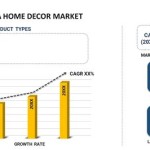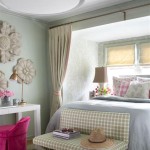```html
Exploring Starbucks Coffee Decor: A Study in Brand Identity and Customer Experience
Starbucks Coffee, a ubiquitous name in the global coffee industry, extends its brand identity far beyond the beverage itself. The decor of its stores plays a crucial role in shaping customer perception, fostering a distinct atmosphere, and contributing significantly to the overall Starbucks Experience. Understanding the nuances of Starbucks' interior design provides valuable insights into how effective branding can impact customer loyalty and drive business success. This article will delve into the key aspects of Starbucks coffee decor, examining the elements that contribute to its recognizable and often replicated aesthetic.
The evolution of Starbucks decor reflects the company's growth and adaptation to changing consumer preferences. Early stores emphasized functionality and a simple, coffee-focused environment. As the brand expanded, the decor strategy evolved to incorporate more comfortable seating, inviting lighting, and locally relevant design elements, reflecting a shift towards creating a "third place" – a space between home and work where customers could relax, socialize, or work remotely.
Starbucks’ decor strategy is not monolithic. It employs a range of design concepts tailored to specific locations, store sizes, and target demographics. While maintaining core brand elements, individual stores incorporate regional aesthetics and architectural features to create a sense of place and connection to the local community. This adaptability contributes to the brand's global appeal, ensuring that each Starbucks store feels both familiar and unique.
Understanding the Core Elements of Starbucks Decor
Several core elements consistently appear in Starbucks stores worldwide, contributing to the brand's recognizable aesthetic. These elements contribute to a sensory experience that reinforces the Starbucks brand and shapes customer perceptions.
One of the most noticeable elements is the strategic use of color palettes. Earth tones, such as browns, greens, and muted reds, are prevalent, creating a warm and inviting atmosphere. These colors evoke feelings of comfort, relaxation, and connection to nature. Accents of brighter colors are often incorporated to draw attention to specific areas, such as the merchandise display or the coffee bar. The consistent application of these color principles contributes to visual harmony and reinforces brand recognition.
Lighting plays a critical role in shaping the ambiance of a Starbucks store. A combination of ambient, task, and accent lighting is typically employed to create a layered and inviting environment. Ambient lighting provides general illumination, while task lighting focuses on specific areas, such as the coffee bar or individual tables. Accent lighting highlights architectural features or merchandise displays, adding visual interest and drawing attention to key elements. The careful calibration of lighting levels contributes to a comfortable and welcoming atmosphere.
Seating arrangements are thoughtfully designed to cater to a variety of customer needs. Comfortable armchairs and sofas provide a relaxed setting for socializing or reading, while tables and chairs offer a more functional space for working or meeting. Bar seating provides a casual option for solo customers. The variety of seating options allows customers to choose the space that best suits their individual needs and preferences, contributing to a sense of inclusivity and accessibility.
The Role of Materials and Textures in Shaping the Starbucks Experience
The materials and textures used in Starbucks decor contribute significantly to the tactile and visual experience within the store. Choices in materials convey different impressions, influencing perceptions of quality, sustainability, and comfort.
Wood is a prominent material in Starbucks stores, often used for flooring, furniture, and wall paneling. The use of wood adds warmth and natural texture to the space, creating a sense of authenticity and connection to nature. Different types of wood, such as reclaimed wood or sustainably sourced timber, are often incorporated to reflect the company's commitment to environmental responsibility. The tactile qualities of wood contribute to a sense of comfort and well-being.
Upholstery fabrics play a crucial role in shaping the comfort and aesthetic appeal of seating areas. Durable and comfortable fabrics, such as leather, linen, and velvet, are often used to upholster chairs, sofas, and benches. The choice of fabric influences the overall style of the store, ranging from classic and traditional to modern and contemporary. The tactile qualities of upholstery fabrics contribute to the overall sensory experience, enhancing customer comfort and satisfaction.
Metal accents, such as stainless steel or brass, are often incorporated into lighting fixtures, hardware, and decorative elements. Metal adds a touch of sophistication and modernity to the space, creating visual contrast and enhancing the overall aesthetic appeal. The reflective properties of metal can also contribute to the brightness and airiness of the store. The strategic use of metal accents adds visual interest and reinforces the brand's commitment to quality and innovation.
Adaptability and Localization: Tailoring Decor to Specific Contexts
While maintaining core branding elements, Starbucks effectively adapts its decor to suit the unique characteristics of different locations and communities. This localization strategy enhances the brand's relevance and fosters a sense of connection with the local environment.
The incorporation of local art and design elements is a common strategy for tailoring Starbucks decor to specific locations. Local artists may be commissioned to create murals, sculptures, or other artworks that reflect the history, culture, or natural environment of the surrounding area. The use of local materials and craftsmanship also contributes to a sense of place and authenticity. This integration of local elements enhances the store's visual appeal and strengthens its connection to the community.
Architectural adaptation allows Starbucks to integrate its stores seamlessly into existing buildings and urban landscapes. In historic buildings, original architectural features may be preserved and incorporated into the design, creating a unique and characterful space. In modern buildings, the decor may be designed to complement the existing architecture, creating a cohesive and harmonious environment. This sensitivity to architectural context enhances the store's visual appeal and reinforces its commitment to respecting local heritage and character.
Consideration of cultural nuances is essential for creating a welcoming and inclusive environment for all customers. Design elements may be adapted to reflect local customs and traditions, such as incorporating traditional patterns or motifs into the decor. Seating arrangements may be adjusted to accommodate different social customs, such as providing communal tables for shared dining or private booths for more intimate conversations. This attention to cultural sensitivity enhances the store's appeal to diverse customer groups and fosters a sense of inclusivity and belonging.
In addition to these core elements, Starbucks often incorporates seasonal decor to create a festive atmosphere and reflect current trends. Holiday decorations, such as Christmas trees, ornaments, and garlands, are typically installed during the holiday season. Seasonal color palettes and materials may also be used to reflect the changing seasons. This use of seasonal decor keeps the store environment fresh and engaging, encouraging repeat visits and enhancing the overall customer experience.
The strategic use of signage and branding elements also contributes to the overall aesthetic of a Starbucks store. The Starbucks logo, with its iconic siren, is prominently displayed both inside and outside the store. Menu boards, promotional displays, and informational signage are carefully designed to be visually appealing and easy to read. The consistent application of brand guidelines ensures that all signage and branding elements are cohesive and reinforce the Starbucks brand identity.
Furthermore, music selection plays a significant role in shaping the ambiance of a Starbucks store. Carefully curated playlists are designed to create a relaxed and upbeat atmosphere, complementing the decor and enhancing the overall customer experience. The music selection is often tailored to specific times of day and customer demographics, ensuring that it is appropriate for the setting. The consistent quality of the music selection contributes to the overall sensory experience and reinforces the Starbucks brand image.
```
The 50 Most Beautiful Starbucks Around World Coffee S Interior Restaurant Design Decor

5 Decor Ideas We Want To Steal From Starbucks For Real Photos Huffpost Coffee House Design Cafe Interior

Reserve Interior Design Starbucks Google Search Cafe Coffee Decor

Five Things We Love About Starbucks Decor Interior Design Styles

Inside The Global Design World Of Starbucks Cafe Interior Restaurant Types Home Decor Styles

Fake Starbucks Coffee Chocolate Mocha Drink Frappuccino Decor

Pumpkin Spice Decor Starbucks Coffee

Seattle Starbucks Photography Kitchen Decor

Starbucks Tiered Tray Decor Farmhouse Coffee Bar

Custom Starbucks Partybackdrop Banner Chalkboard
Related Posts







